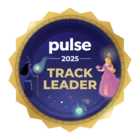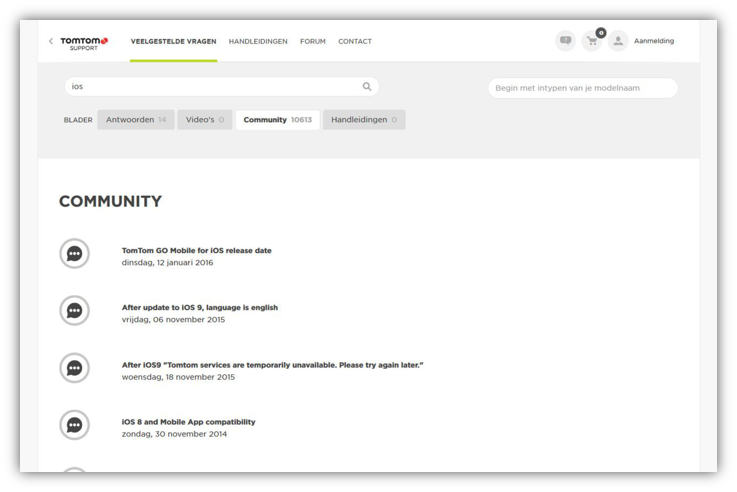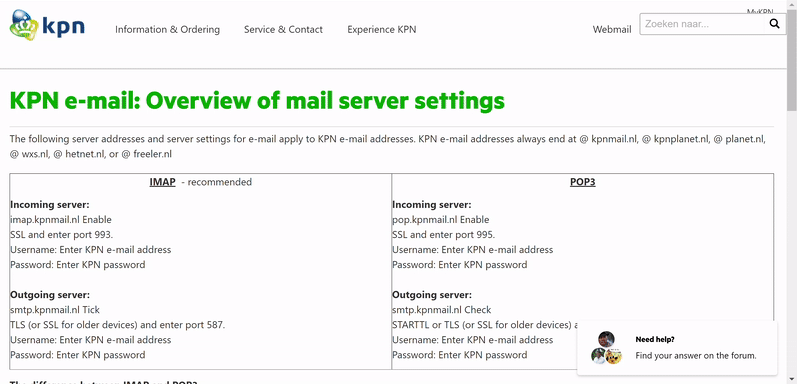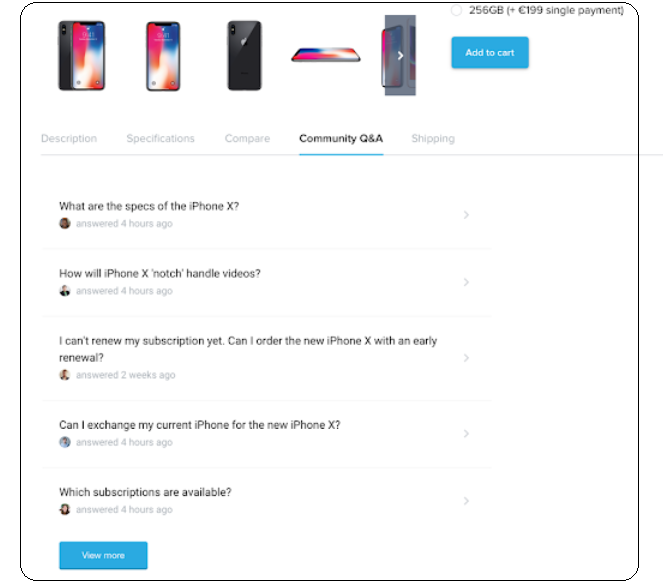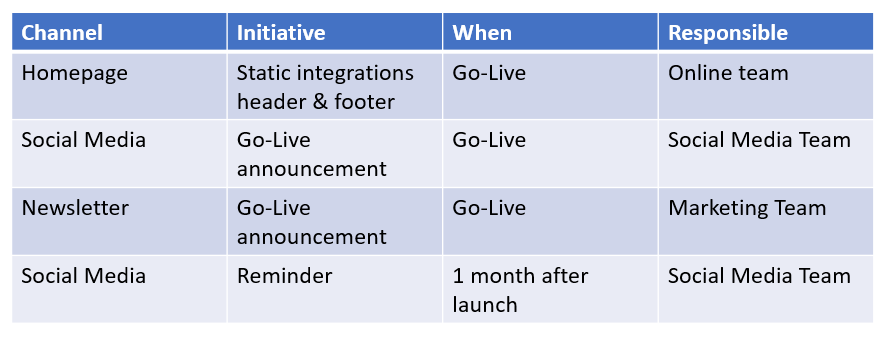Welcome to the introduction to our second pillar of creating community success: The traffic strategy.
Growing your community begins with reaching out to those who do not yet know about your community. The previous chapter showed how relevant content is being developed and distributed. We now have to think about the best strategy to spread the word, so that people who could benefit from your community's content will be able to find it quickly and with as little hassle as possible. The smart use of integrations, campaigns and other means of generating traffic combined in an acquisition plan form our traffic strategy.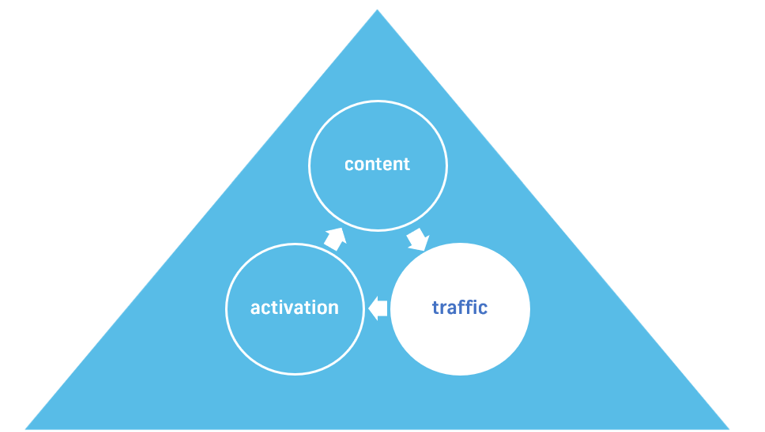
As previously noted, relevant content will make users want to visit the community. However the best content in the world will not help when nobody knows about it. By making the content known via newsletters, the website, emails, etc. the organization can encourage people to visit the community and increase the chances of acquiring new members. We will show you how to get your community known.
Main drivers for community traffic
Before we decide on a strategy to attract visitors, we first should look at the main traffic sources that bring people to your community. People are using all sorts of channels. Let's have a look at the main drivers to understand what we have to focus on:
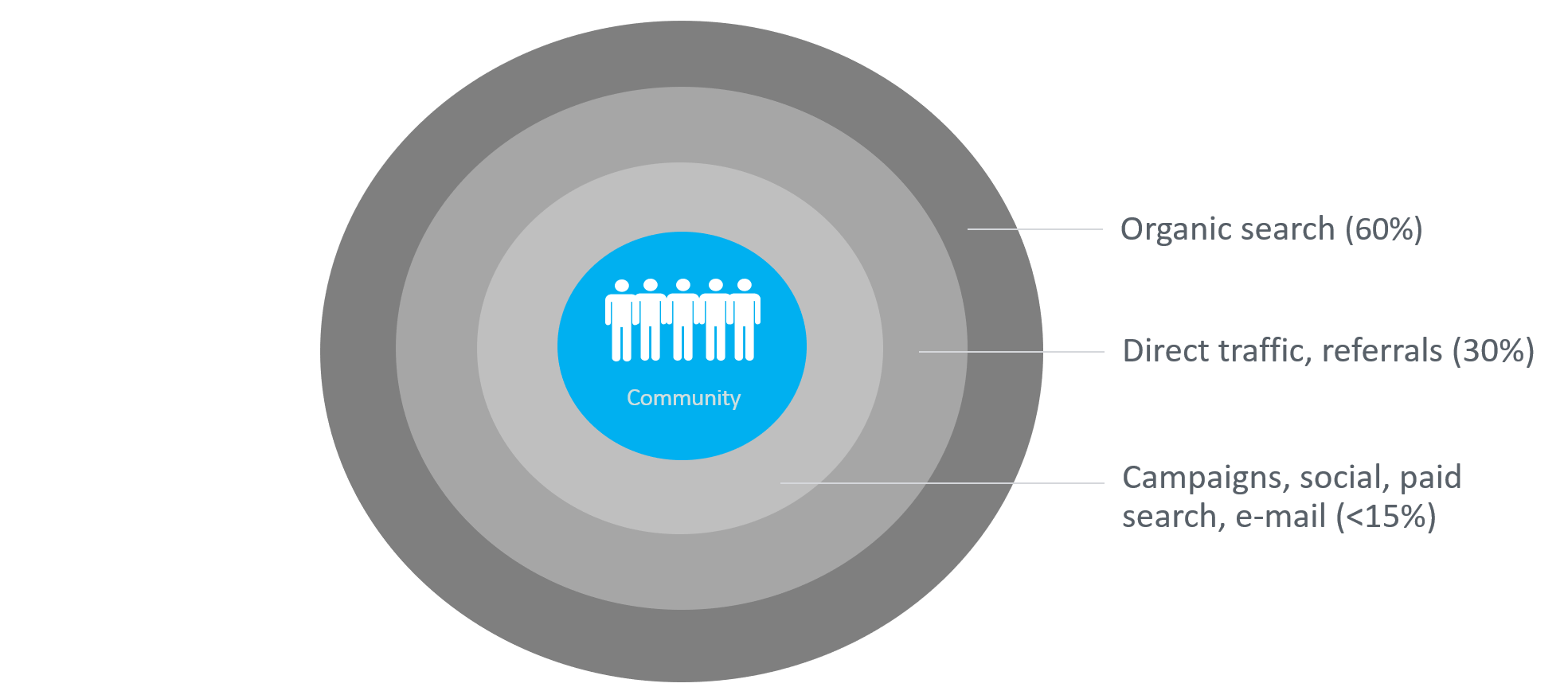
Once your community has established a decent amount of content, it will be listed by all relevant search engines. In average around 30%-65% of all traffic to your community comes from organic search. But until the share has grown that big, it will take about 6-9 months in average.
Campaigns via Email, social media or even offline can generate up to 30% of traffic in the beginning, however these campaigns will only generate traffic for a limited amount of time. When you are planning campaigns, try to think outside of the box. Even offline campaigns can be very successful, if executed right.
In opposite to the above, referral traffic will ensure a steady flow of visitors right from the start (up tp 30%). Integrations are links to the community on your companys' homepage or on external websites. This is the bread and butter in the beginning, as a constant stream of traffic is almost guaranteed. So let's have a closer look at them.
The value of integrations
Integrations can arise in the form of little additions (widgets) or smart references in the overall website based on community data or pointing towards the community. These can be regarded as highly useful to its users. Integrations can demonstrate the community’s value, but can also function independently as relevant sources of information helping the user find the answer to his question. The community and website will therefore reinforce each other. We differientiate between two types of integrations: static and dynamic integrations.

The easiest achievable integrations are the static ones since these only require some HTML, styling and/or graphic changes. For example, these could include buttons, navigation links, banners and explanation blocks.
No real-time data or interactive functionality is involved in these types of integrations. These integrations create a lot of value, the more prominent an integration is being placed, the better. By incorporating a forum button in the header navigation or by adding an icon that represent the community next to other contact channels, people are more likely to go on the community. The integration in the header is an easy and important first step to take right away.
Here an example how TomTom is using a static link on their website:
There are tons of opportunities to discover where static integrations could be used. Another interesting way to advertise your community are dynamic integrations.

Dynamic integrations are relatively time-consuming to develop, compared to the static ones. However, both have the freedom to make alterations to the website independently of CC. This is made possible by the accessibility of the CC community API, which powers the integrations by providing tailor-made and real-time data from within the community.
These examples show dynamic integrations which will display search results on the homepage (or e.g. the support landing page), user-generated FAQs or simply some general statistics of your community. But there are many more opportunities to implement pieces of information from the community.

Interactive integrations are giving a customer the opportunity to e.g. search for items on your community, while browsing your company homepage.
The example displayed above shows a search on the TomTom support landing page. As you can see, the results originating from the community are displayed in a dedicated column.

Embeddable integrations will enable you to easily "unlock" your community content and put it where it really makes a difference. In contrast to dynamic or interactive integrations, embeddable integrations can be integrated within seconds!
There are two types of embeddable integrations:
The embeddabled widget
You can integrate a widget which will be offered to customers on the side of a website, e.g. to offer additional information to a FAQ. This way you can increase the reach of the content of your community easily, and bring the information where your customer is looking:
The in-page widget
You can also decide to integrate relevant topics into your product page. Your customers will be able to see directly what other customers are discussing:
We are currently working on expanding the features for managing embeddable integrations, e.g. curation of content, search, etc... Let us know in case you want to try this powerful tool, and we will make sure that you receive all the information necessary.
Exercise: create an integration plan
Please prepare an overview which lists the integrations which you think would have the biggest exposure to users, or which you think you are able to integrate short- and mid-term. Here an example of an integration plan
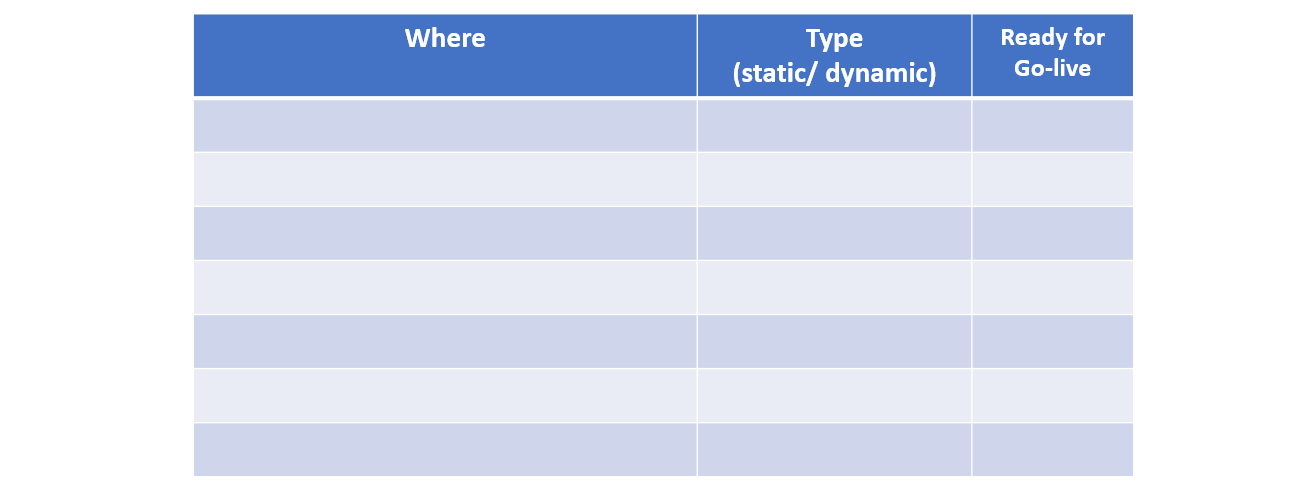
While integrations are very important, they should only be a part of your approach to user acquisition. Campaigns, newsletters, events and many other initiatives can be planned. A user acquisition plan will make sure that you can execute a multi-channel approach to recruit future community members.
The acquisition plan
The acquisition plan will organize all the plans to address your target audience in a channel which they are likely to use. It combines all the relevant information to monitor the engagements in user acquisition. It includes plans for integrations, as well as campaigns and all other efforts you can imagine. This overview can include details for each channel, such as:
- Channel name / type (e.g. static integration)
- Publishing date
- Frequency (monthly, once, etc.)
- Stakeholders (who will make it happen)
Depending on the context, you can add or remove fields where it makes sense.
To offer a more concrete example of a campaign: You plan to advertise the community launch to your most dominant target group by executing a campaign using your company social media presence. For this you will not just need to create the content for a post, but you will also speak to the Social Media Manager and agree on the details. Here how this could look like in an acquisition plan:
Exercise: Create a draft for an acquisition plan
Please work on a first draft of your plans for user acquisition. Then refine and improve it over the next weeks, so that you have a complete document for your go-live and the weeks after.
Questions or feedback?
As usual, feel free to reach out to us should there be any questions or concerns we are always happy to help!
What's next?
Once you have created your traffic strategy, we will move on to the third (and last) chapter of the community success sessions: The activation strategy. This is where it is all about engaging with your community - click here if you already want to have a look. 🙂
